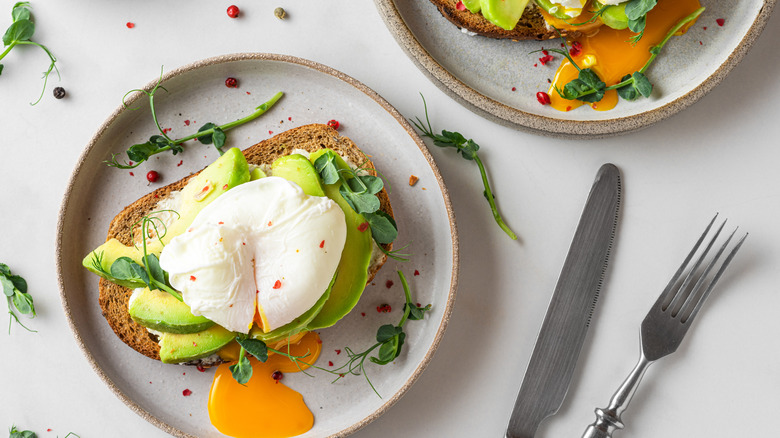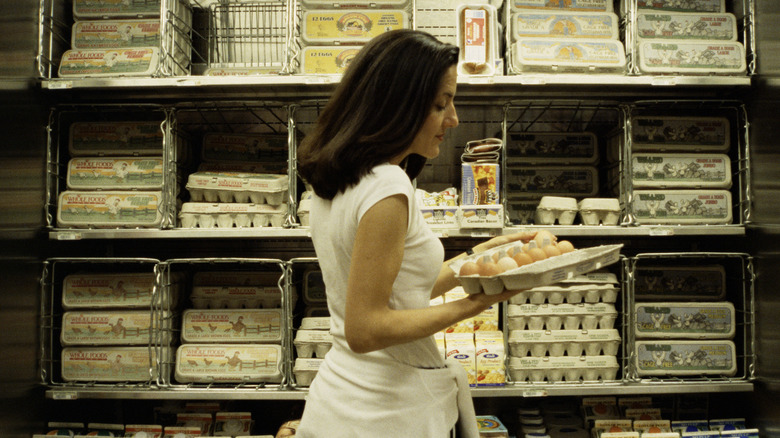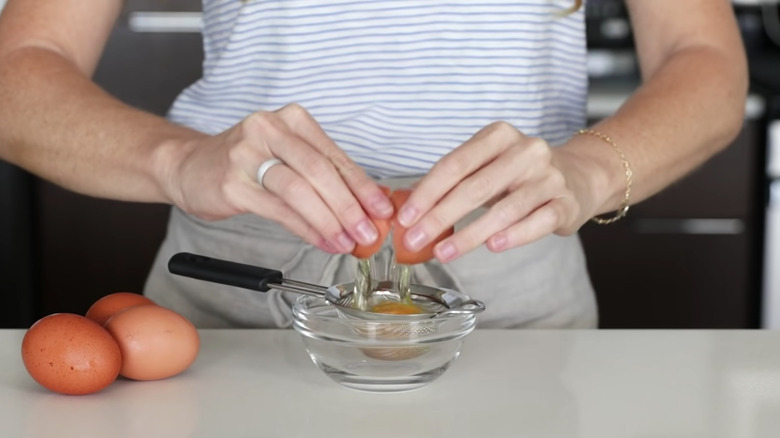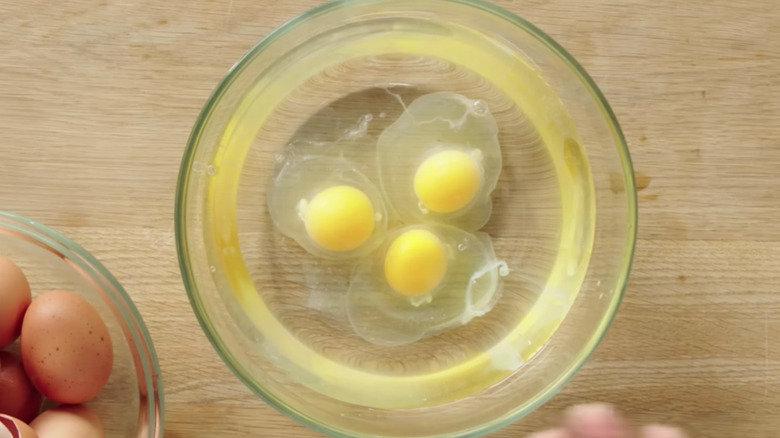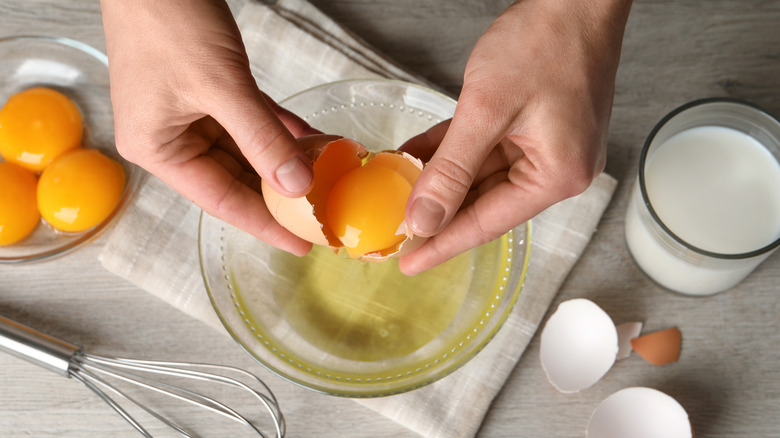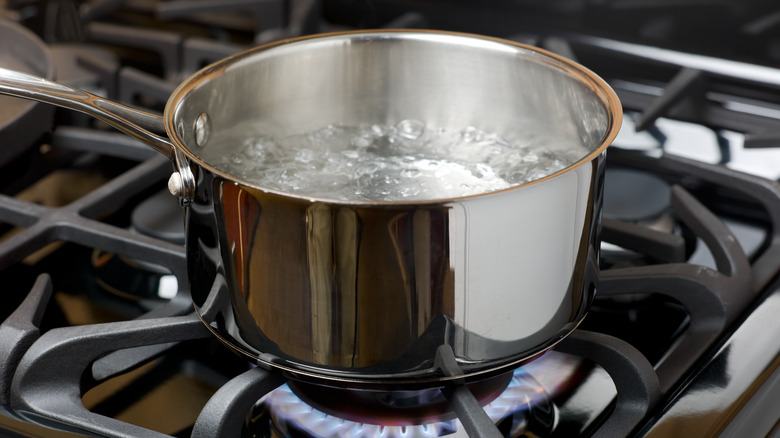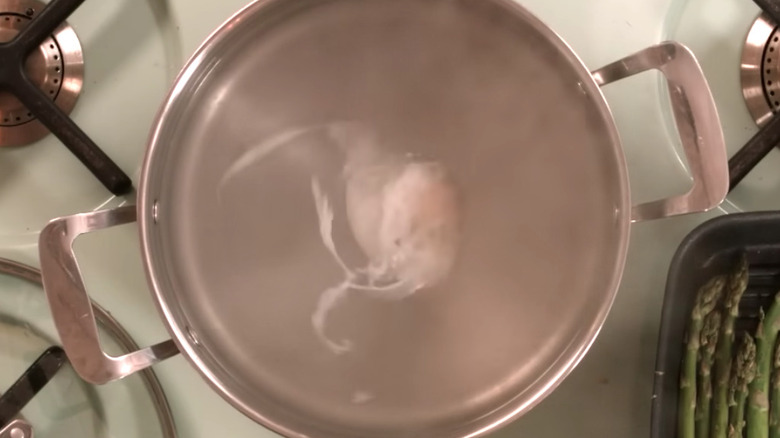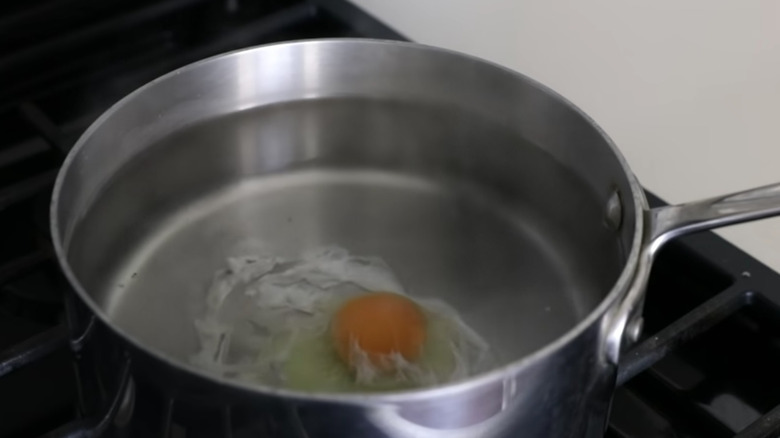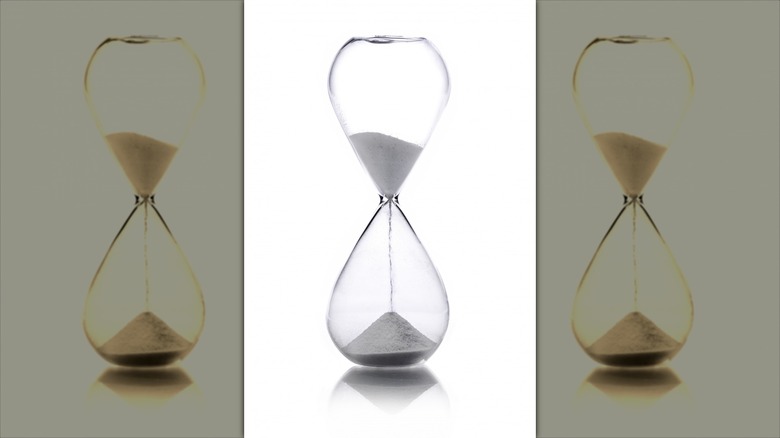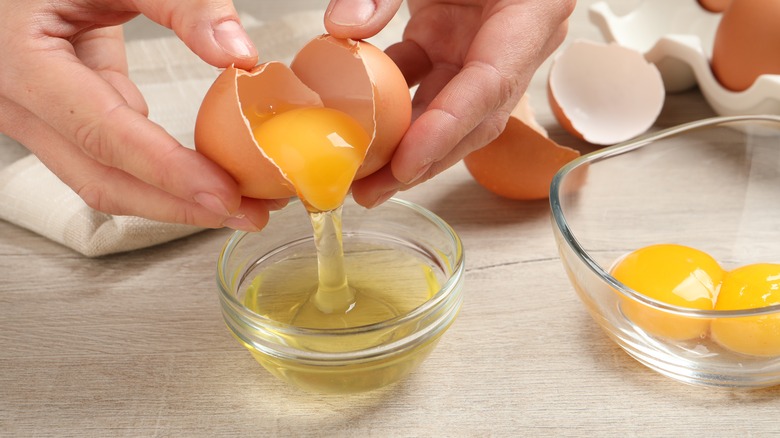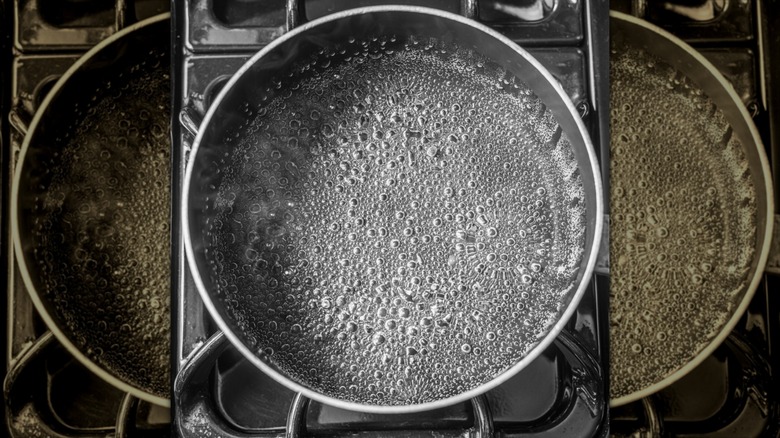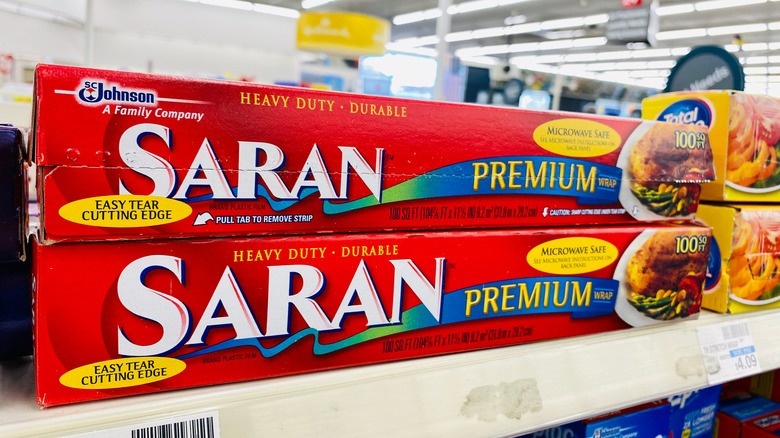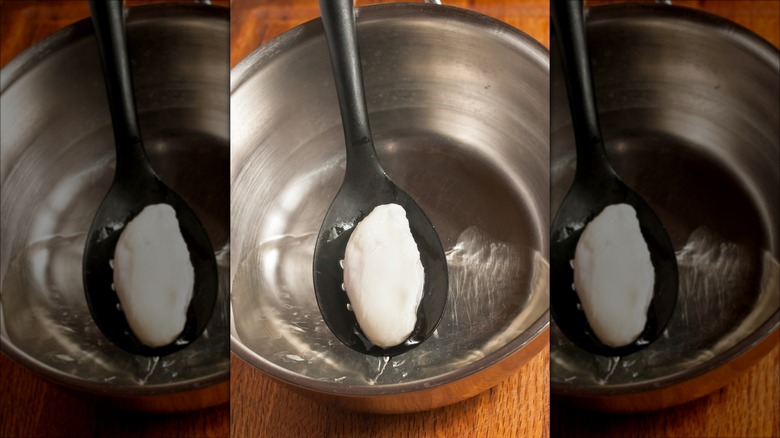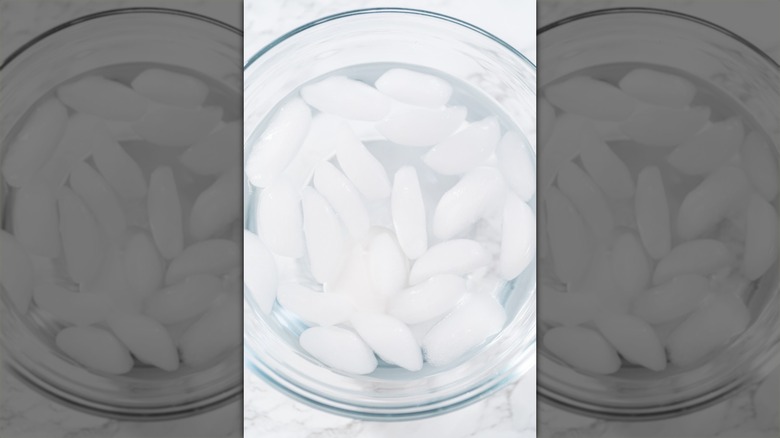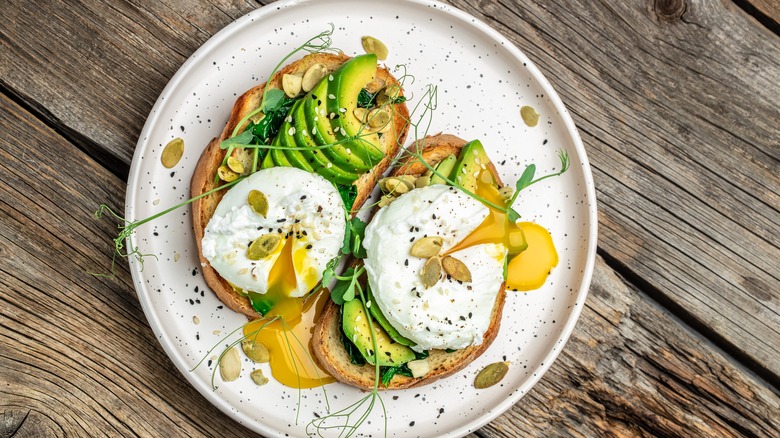14 Tips And Tricks For Perfectly Poached Eggs
Perfectly poached eggs deserve the chef's kiss that so many people bestow upon them. They're savory and satisfying, and a wonder to behold, particularly when served with brunch favorites, like avocado toast or steamed asparagus topped with shavings of Parmesan cheese and cracked pepper. But, they're not just the kind of dishes that you might see served at a country club brunch. For many egg fans, both home chefs and famous restaurant celebrity chefs alike, they might qualify as one of the few comfort food meals that people eat over and over again at home when nothing else sounds good, at least, that's the case if they really and truly are perfectly poached eggs.
Sadly, many of us never learned the trick to making perfectly poached eggs every time. They either end up overcooked or broken apart with strings of egg-white tentacles hanging from their yolks, looking less like breakfast and more like an egg-yolk octopus on a plate. While those versions of poached chicken seeds may still be edible in a pinch, they don't exactly qualify as the chi-chi brunch food that you and your guests might hope for. So, if you're tired of facing down the yellow-yolk-and-stringy-egg-whites octopus every morning, try these 14 tips for perfectly poached eggs.
1. Start with ultra-fresh eggs
There's no question about it. Whether it's building a house or a powerful breakfast, the raw material you use makes all the difference. While our expertise in house building leaves something to be desired, we can say emphatically that when it comes to making perfectly poached eggs, we know a little something. And trust us, fresh always trumps day-old eggs any day. The older eggs get, the runnier the egg whites become, which means you get those stringy white tails that hang from an otherwise good poach.
Granted, you may not be in a position to grab your eggs once they're first dropped into the world at 6:00 a.m. in the hen house, but that doesn't mean you're completely powerless when it comes to getting fresh, quality eggs (short of growing your own chickens, of course). When you're in the grocery store, pull the eggs from the back of the refrigerator instead of the front. Store clerks will rotate stock to ensure that the older stock gets moved to the front to be sold before its expiration date. You'll find the magical golden poaching eggs behind the ones in the front.
2. Strain the eggs with a fine-mesh sieve
It's clear that eggs with the tightest egg whites produce the best-looking poached eggs. It's the loose egg whites that make poached eggs look sloppy because they break apart in the water, taking on a stringy appearance. But, there is one way to rescue an otherwise edible but not fresh-that-morning egg.
Put the egg in a wire sieve and let the liquidy egg white strain out the bottom into a bowl. The egg yolk and white that you have left once the straining ends have a better shot at keeping it together once cooking commences. On a related note, it doesn't matter how old your eggs are to try this hack, as it can also help with fresh eggs as well. They won't be as runny as your days-old eggs, but putting them through the strainer will rid your egg of any loose whites that could otherwise cause stringy eggs.
3. Soak the eggs in room temperature water for 10 minutes
Keeping the egg whites together until the hot water can set the poached egg is the first job for the home gourmand. If only you could set the egg whites before the cooking commences, you'd likely end up with a poached egg that doesn't come complete with long white tentacles. As it turns out, there is a way to set the egg a bit before you cook it.
First, pour a tablespoon or so of white vinegar into a bowl filled with room-temperature water. Next, crack the egg or eggs that you'll cook into the bowl of vinegar-infused water. Allow them to sit in the water for about 10 minutes or so. Don't let them sit for too much longer in their vinegar bath because they'll start to taste like vinegar.
So, what's the point of the vinegar if it isn't flavor? The point is to let the egg whites soak a bit in the vinegar so that the vinegar's acid does its magic to the whites. You'll know it's working when the eggs start to look like they've been started cooking. The whites will turn white just as they would if they had been immersed in hot water. The vinegar helps to coagulate them a bit before cooking, helping you to prevent some of the spread that comes along with poached eggs.
4. Drop the egg into a bowl first
When it comes to properly poaching eggs, there isn't just one route to stopping the dreaded egg-white spread. Putting the eggs into vinegar-infused water offers you one option. Another option is to crack the eggs into small bowls or ramekins before you drop them into the hot water. Doing this gives you a bit more control over the egg.
Think of it this way. One of the things that contributes to egg breakage is cracking the egg over already simmering water. If the yolk breaks in the process, the egg might be edible, but it'll hardly be perfect. Cracking the egg into a bowl first ensures that you put an intact egg into the cooking water. It also ensures that you keep the eggs separate if you're cooking more than one poached egg. That is to say, the whites from one egg won't run into the whites of another egg. It's neater all around.
And incidentally, if you really feel you still want to try the vinegar trick, you have options. Rather than putting it in the bowls with the eggs, drop a capful or two of vinegar directly into your cooking water. It works the same way.
5. Don't put the eggs into the water until the boil dies down
Boiling water will most definitely and completely cook your poached egg. It'll also blow it to smithereens in the process. There ain't no way that you won't be fishing out the remnants of all that errant egg white at the bottom of the pot, even with the best of slotted spoons. As inexperienced cooks, we've probably all experienced this. It's like a rite of passage for the home cook.
Sadly, some of us never got the memo that boiling water, while excellent for cooking hard-boiled eggs, isn't so great for poached eggs. Fortunately, the solution for this is simple. You can start the water to boiling. Once it gets all nice and bubbly, turn it down to a simmer. You'll see little bubbles forming at the bottom of the pot but they should have none of the rolling bubbling that comes with a full-on boil. Once the water has calmed down, gently drop your eggs into it for poaching.
6. Spin the water to work with less-than-fresh eggs
In the world outside of the kitchen, a whirlpool can be the source of intrigue, a portal to the bottom of the ocean, or perhaps the eye of a storm. In the world of poached egg making, the eye of the storm doesn't necessarily mean destruction at all. In fact, when approached correctly, it means the difference between having a poached egg with a fairly intact white or one that looks like a hurricane blew it apart.
The trick to this is to heat up the water until it's simmering, not boiling. Using a large spoon, create a whirlpool in the center of the water. Once you create the whirlpool, gently drop the egg into the center of it. The whirlpool action wraps the egg white tentacles around the egg, pulling the strands of egg whites to the center. There's no need to keep stirring the whirlpool once the motion starts. Ideally, the egg will only be in the water for two or three minutes. One good whirlpool should create enough spin to last for the duration of the egg's cooking time. You'll find this trick especially helpful if you don't have fresh eggs. It pulls in some of the run that comes with days-old egg whites.
7. Avoid salting the water
If you've spent any time cooking in your life — and given where you are right now, we assume you have — then you know that conventional cooking wisdom suggests that if you plan to cook something in water, you should salt the water first. That's great advice for cooking pasta or rice. You want the salt to permeate the taste of these foods, so giving the salt shaker a flick or two of the wrist over your cook pot makes total sense.
However, when it comes to cooking the perfect poached egg, conventional wisdom doesn't apply here. The density of the water undergoes a major transformation once you add salt to it. It then becomes a matter of chemistry and physics working against your sublime poached egg experience and the result is a poached eggs ith egg whites that are all broken up and splayed out. You might as well have just scrambled the egg!
8. Don't cook the eggs for more than a couple of minutes
Some foods, like pot roast, require hours and hours of cooking time before they reach perfection. Poached eggs aren't pot roast. They don't require hours of cooking in a hot oven, so when it comes to cooking them, less is more.
That said, there are some rules of thumb to keep in mind. If you plan on eating the eggs immediately, just cook them for about 3 minutes, no more. Serve them immediately with your toast or asparagus or what have you. (As a side note, since the eggs take so little time to cook, many of the foods you'll eat with them might need to be cooked slightly ahead of time.) On the other hand, if you plan on poaching the eggs a little while before serving, cook them for about 2 minutes to set them, and then stop. You can set them aside and warm them up later when you're ready to eat them. You'll know they're done if they're slightly soft to the touch.
9. Limit the number of eggs you poach at a time
Cooking perfect poached eggs isn't like cooking perfect hard-boiled eggs. With hard-boiled eggs, it's nothing to see 10, 12, or 15 eggs in the pot at a time, particularly around Easter time when little Bunny Foo Foo will be making his rounds. Not so with poached eggs. More isn't the better because trying to keep all those egg yolks separate in the pot is a lot like wrestling roosters in a swimming pool. Thanks to the motion of the water, they won't stay in one neat place, allowing you to deal with each individual egg on its own. No. Pretty soon, the egg parts merge, and usually, it's the whites that do this, but get too many poached eggs in one pot, and you'll be trying — unsuccessfully — to keep the yolks from merging, too.
There is a way around all of this. Start by cracking up to three eggs into a small bowl or ramekin. Heat up the water and then create a whirlpool in the water. Once the whirlpool has begun, gently drop the eggs into the hot swirling water, allowing the whites to set. Since the water is simmering and not boiling, you can allow the swirl to die down and allow the vinegar (if you've added it to the cooking water) and the heat to firm up the eggs. Once they are set, remove them from the water with a slotted spoon.
10. Use just a couple of inches of water in the pan
When it comes to the amount of water that you pour into the cooking pot, being conservative is the way to go. While you don't want water so shallow that you might as well be poaching your eggs in a skillet, you also don't want so much water that you could boil a pot of spaghetti for 10 people in it, either. Adding three to four inches of water to a three-quart pot is, as Goldilocks would say, just right. It's deep enough to allow you to create a whirlpool to swirl your eggs around in but shallow enough to keep control of the eggs while they're swimming in your chef's Jacuzzi.
As a side note, less water takes less time to bring to a boil. While it's not a good idea to poach eggs in boiling water, the water needs to be at nearly boiling temperature to coagulate the eggs. In this case, if you use less water, you'll be closer to eating those delectable poached eggs because you won't have to wait 20 minutes for the pot of water to heat up.
11. Cling wrap the eggs for a perfect shape
If, after trying every trick in the book, you still come up with broken and tentacled poached eggs, may we suggest that you wrap the uncooked eggs in cling wrap before cooking? This method keeps the eggs completely intact, even to the point of not allowing the egg-white tentacles to form.
The process is fairly straightforward. Line a ramekin with a square of plastic cling wrap. Create a square of wrap large enough to allow for the ends to be tied in a knot once the egg's in it. Line the ramekin with the wrap and spray the cling wrap with cooking spray. Drop the uncooked egg into the cling-wrapped cup. Tie up the end of the plastic wrap and drop it into the water for a couple of minutes. Once you remove it from the water, cut the knot off the cling wrap and slide a perfect egg onto a plate.
12. Slot and blot the finished eggs
Without the proper tools and techniques, the poached eggs you pull from the water will leave a trail of water on the plate, courtesy of a dribbling spoon and a wet egg. Two things will prevent this presentation from looking sloppy: a plate with a linen towel on it and a slotted spoon. This step represents one of the more straightforward aspects of cooking your egg.
To stop the trail of water, use a slotted spoon to remove the egg from the water. Shake it gently to get rid of the big drops. Slide it onto the linen towel and blot the excess water from the egg using one of the towel's corners. Scoop the egg back up onto the slotted spoon and place it on the serving plate.
And, one side note about opting for a linen towel versus a paper towel: In a pinch, you can blot the egg with a paper towel. However, if you do this be aware that paper towels leave fibers on food. You may end up with a furry egg, which is why linen might be better suited for this task.
13. An ice water bath saves the eggs for later
Poached eggs and asparagus for 10 people for brunch at 11:00 a.m. equals lots of logical headaches for the home chef. Juggling that number of eggs just a few minutes before opening the door to your guests may be more difficult than your host muscles can endure, particularly if you intend to make more than one poached egg per person.
An ice bath – that is, water in a bowl plus a bunch of ice cubes — saves brunch. Just poach the eggs ahead of time, leaving them slightly undercooked. And then, place them in an ice bath until a few minutes before your event starts. Once it does, finish poaching the eggs in hot water and serve.
The ice bath stops the yoke from cooking. This allows you to reheat the eggs to finish the job without having to worry about having an overcooked yolk. Just drop the eggs into a pot of heated water for a minute or so longer to heat the eggs up and to finish the cooking process. They'll be fresh cooked poached eggs with just the right consistency.
14. Wait to season the eggs once they're done cooking
Few things taste as satisfying in the morning as a hearty plate of poached eggs accompanied by toast. It's the combination of the eggs cooked to perfection and a blend of savory seasonings, including the King and Queen: salt and pepper. It's that savory taste that prompts most people to salt their poached egg water. However, for a number of reasons, seasoning the water is both unnecessary and even harmful to the look of the egg.
Aside from this, it takes about 3 minutes to cook poached eggs. This is hardly enough time for the seasoning to really soak into the egg. A better tactic all around is to season the eggs once they're on the plate, ready to eat. You'll guarantee a more savory flavor and you won't have to worry that the salt in the water will tear up the whites of the eggs, leaving you with lots of messy-looking egg-white tentacles in the process.
